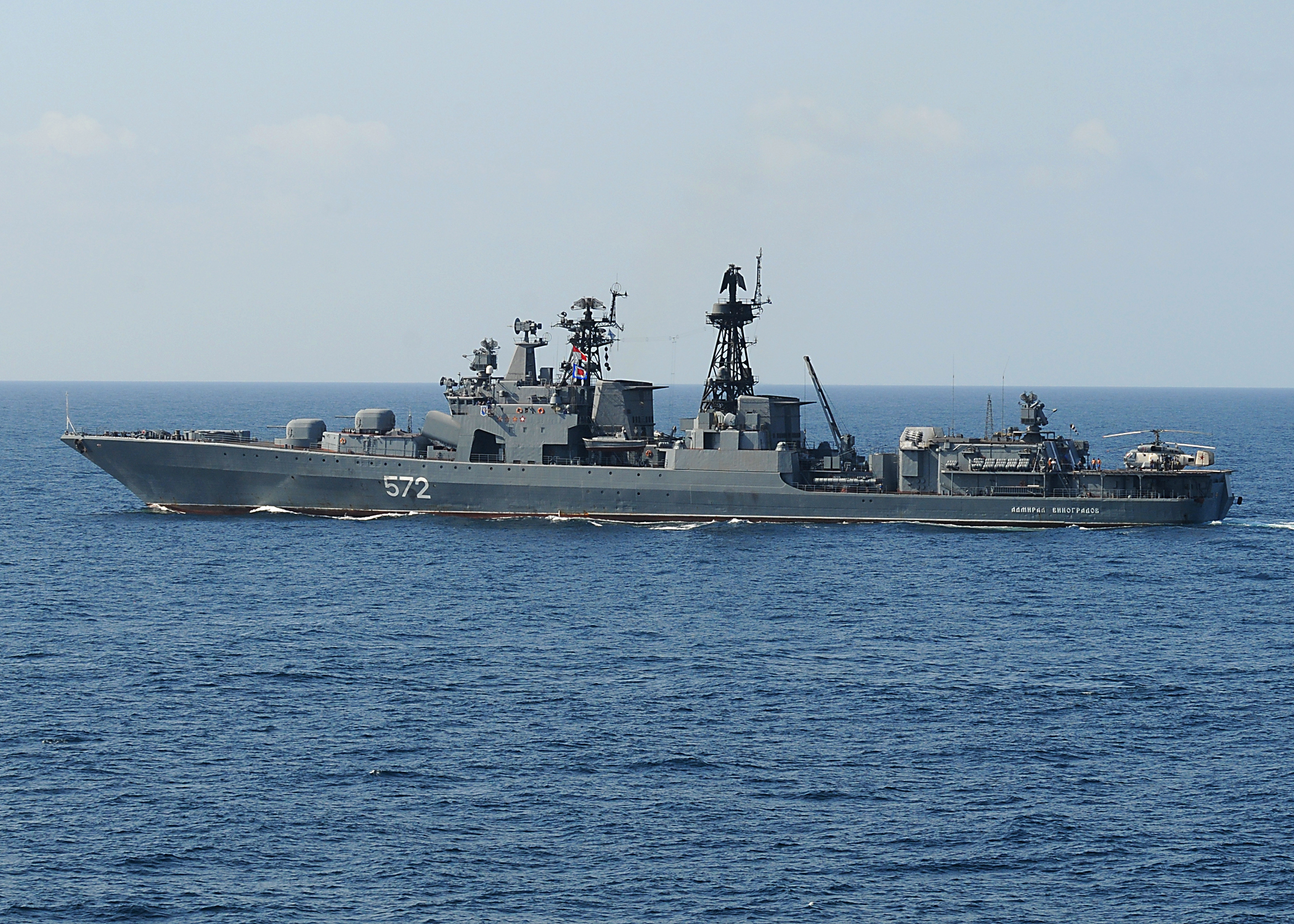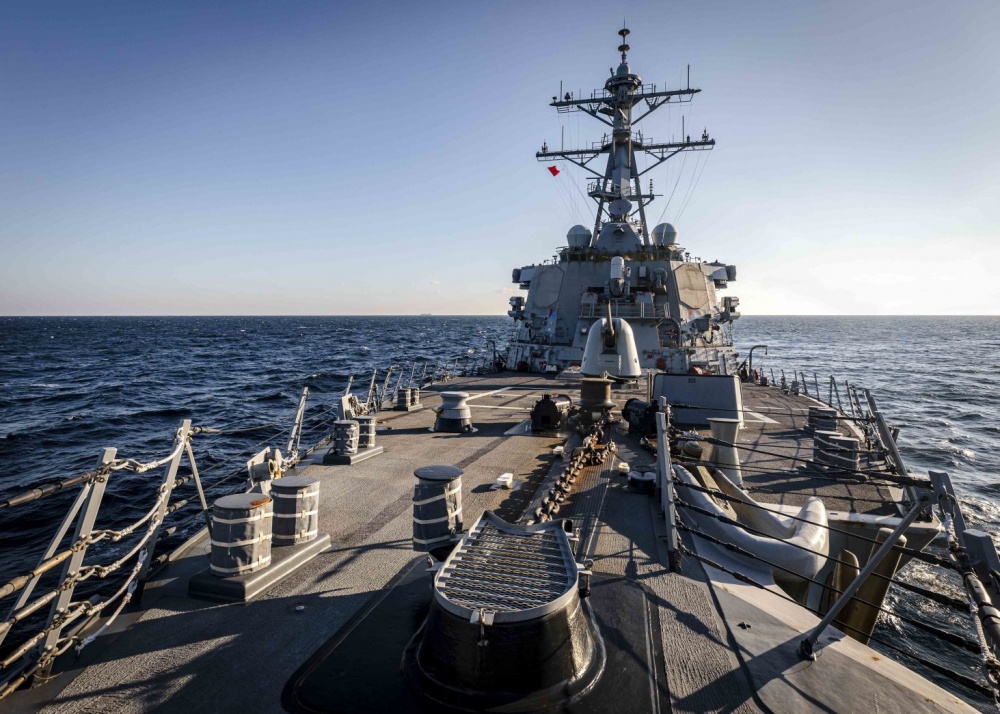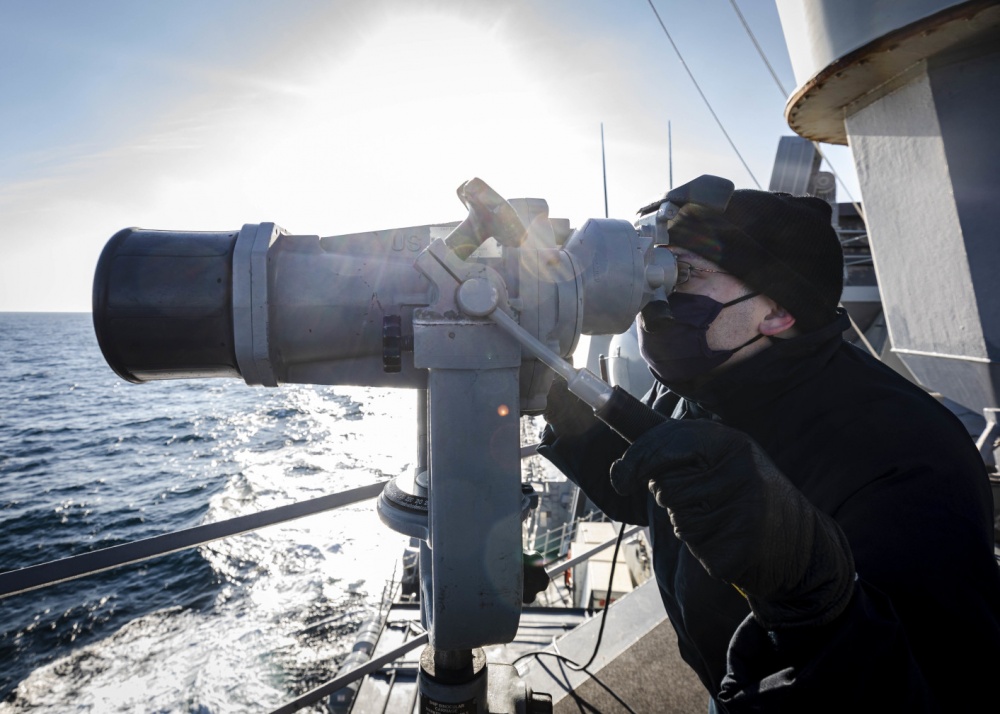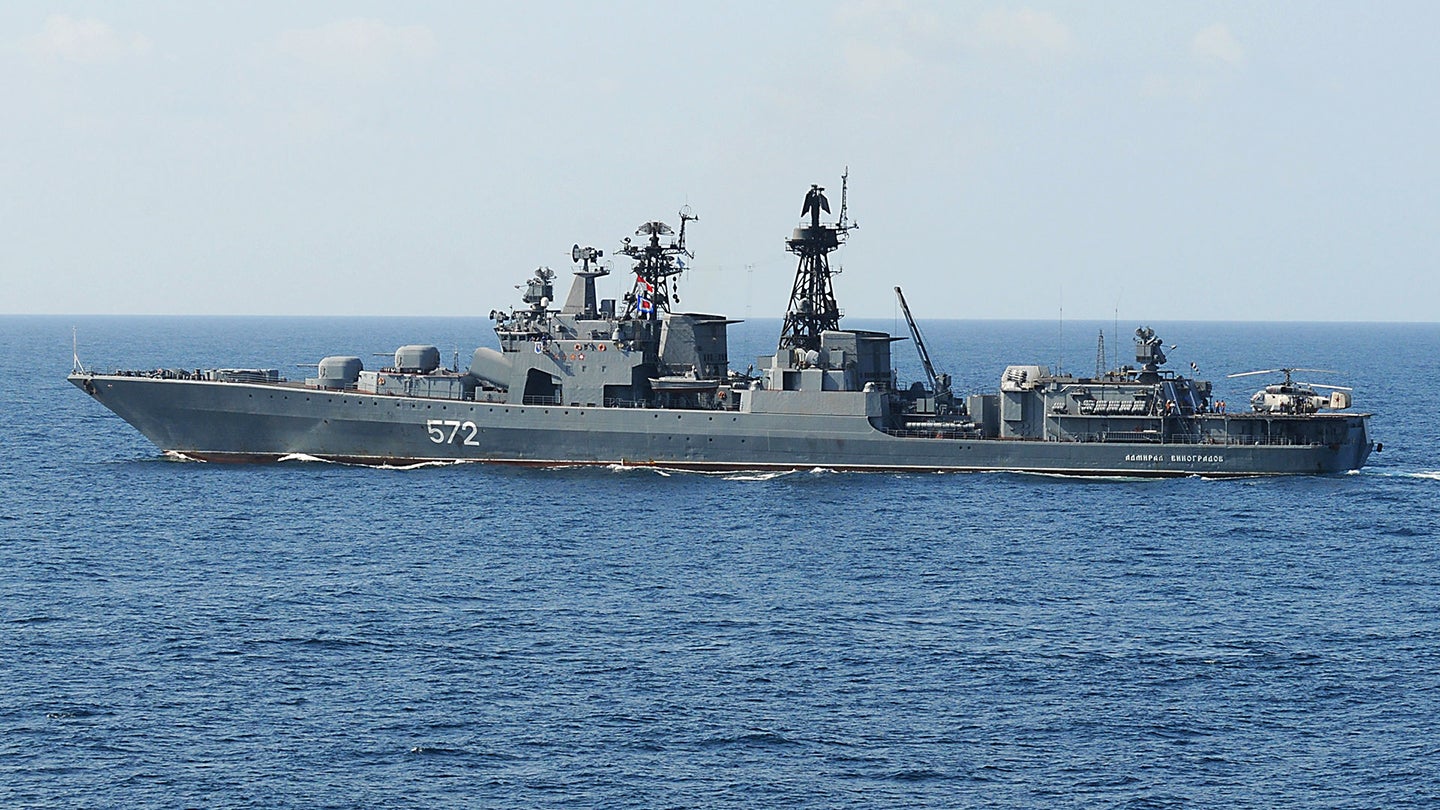Russia says that the crew aboard the Udaloy class destroyer Admiral Vinogradov, which has been involved in at least one near-collision in recent years, threatened to use a “ramming maneuver” as it ejected the U.S. Navy’s Arleigh Burke class destroyer USS John S. McCain from what it claims are its territorial waters in the Peter the Great Gulf in Sea of Japan. The U.S. 7th Fleet has confirmed that the Navy ship was conducting a rare so-called Freedom of Navigation Patrol, or FONOP, to challenge Russia’s “excessive maritime claims” in the area, but denies it was forced to leave.
The Russian Ministry of Defense said that the apparent altercation between Admiral Vinogradov and John S. McCain occurred at 06:17 AM Moscow time, or 03:17 AM GMT, on Nov. 24, 2020, in the Peter the Great Gulf, according to state-run media outlet TASS. This body of water extends from Russia’s border with North Korea to Cape Povorotny on the Sea of Japan in Russia’s Far East. Lying on the gulf is Vladivostok, the largest city in the region and home to the headquarters of the Russian Navy’s Pacific Fleet.
Russian authorities claim that the American destroyer sailed across the country’s maritime border and continued for approximately two kilometers, or just under 1.25 miles, before the Russian Navy’s warship arrived to block it from proceeding any further.
“The Pacific Fleet’s Admiral Vinogradov anti-submarine destroyer used an international communication channel to warn the foreign vessel that such actions were unacceptable and the violator could be forced out of the country’s territorial waters in a ramming maneuver,” the Russian Ministry of Defense’s statement said. “After the warming was issued and the Admiral Vinogradov changed its course, the USS John S. McCain destroyer returned to international waters.”


According to TASS, the Russian Ministry of Defense said the John S. McCain did not make subsequent attempts to re-enter Russia’s territorial waters, but added that the Russian Pacific Fleet’s Steregushchy class corvette Sovershenny had also been dispatched to the area.
The U.S. Navy’s 7th Fleet issued a swift rebuttal of the Russian claims, with spokesperson Lieutenant Joe Keiley telling The War Zone:
“The Russian Federation’s statement about this mission is false. USS John S. McCain was not ‘expelled’ from any nation’s territory. McCain conducted this FONOP [freedom of navigation operation] in accordance with international law and continued to conduct normal operations in international waters,” Keiley said. “The operation reflects our commitment to uphold freedom of navigation and lawful uses of the sea as a principle, and the United States will never bow in intimidation or be coerced into accepting illegitimate maritime claims, such as those made by the Russian Federation.”
It’s worth noting that the Navy, as well as U.S. military aircraft from various branches of the U.S. military, routinely conduct FONOPs and otherwise challenge Chinese territorial claims in the Pacific, especially in the South China Sea and the Taiwan Strait. Activities targeting Russian claims are far less common, but there has been a notable uptick in such operations this year, including Air Force bomber sorties into the Sea of Okhotsk, which is surrounded on three sides by Russian territory.

The 7th Fleet’s Public Affair Office subsequently published a longer statement online reiterated that the John S. McCain was asserting its navigational rights and freedoms legally in the vicinity of Peter the Great Bay and also pointed to Russia’s “excessive maritime claims” in the region.
The point of contention, as far as the U.S. government is concerned, relates to maritime claims that date back to 1984, when the Soviet Union, also referred to by the acronym USSR, declared a system of “straight baselines” along its coasts, staking claims to certain bodies of water, such as the Peter the Great Bay, as “internal” to the country’s sovereign borders.
The 7th Fleet’s statement goes on to explain in more detail the objection American officials have with the maritime claims regarding the Peter the Great Bay, as well as the practical measures that are undertaken to uphold international law, which you can read in full below:
“This 106-nautical mile (nm) closing line is inconsistent with the rules of international law as reflected in the Law of the Sea Convention to enclose the waters of a bay. By drawing this closing line, the U.S.S.R. attempted to claim more internal waters — and territorial sea farther from shore — than it is entitled to claim under international law. Russia has continued the U.S.S.R. claim. By conducting this operation, the United States demonstrated that these waters are not Russia’s territorial sea and that the United States does not acquiesce in Russia’s claim that Peter the Great is a ‘historic bay’ under international law.”
“U.S. forces operate in the Indo-Pacific region on a daily basis, as they have for more than a century. They routinely operate in close coordination with like-minded allies and partners who share our commitment to uphold a free and open international order that promotes security and prosperity. All of our operations are designed to be conducted in accordance with international law and demonstrate that the United States will fly, sail, and operate wherever international law allows — regardless of the location of excessive maritime claims and regardless of current events.”
“The international law of the sea as reflected in the 1982 Law of the Sea Convention provides for certain rights and freedoms and other lawful uses of the sea to all nations. The United States upholds these rights and freedoms as a matter of principle to preserve the freedom of the seas that is critical to global security, stability, and prosperity. As long as some countries continue to assert maritime claims that are inconsistent with international law as reflected in the 1982 Law of the Sea Convention and that purport to restrict unlawfully the rights and freedoms enjoyed by all States, the United States will continue to defend the rights and freedoms of the sea guaranteed to all.”
The Navy has, so far, not specifically confirmed or denied the threatened ramming. However, it would not be the first time in recent years that an American warship has had a near-collision with one of its Russian Navy counterparts in the Pacific. In 2019, the Navy said that Admiral Vinogradov, the same ship involved in this latest incident, came dangerously close, within 50 to 100 feet, to Ticonderoga class cruiser USS Chancellorsville while it was sailing in the Philippine Sea.
The Navy said the crew aboard the Chancellorsville had to fully reverse the ship’s engines to avoid a serious accident. A video of that previous encounter, after which the two sides also issued competing claims about what had happened, is provided below.

That near-miss was just one of a number of recent altercations between Russian and American forces around the globe. In June 2016, for example, the Russian Navy claimed that the Arleigh Burke class destroyer USS Gravely cut off its Neustrashimy class frigate Yaroslav Mudry in the eastern Mediterranean Sea. Later, it became apparent that the Russian warship had, in fact, been trying to interfere with the activities of the Truman Carrier Strike Group.
Earlier this year, the Navy revealed that a Russian Navy spy ship “aggressively approached” the Arleigh Burke class destroyer USS Farragut in the North Arabian Sea. One of two Project 18280 Yuriy Ivanov class spy ships reportedly got within 180 yards of the US warship, according to CNN.
In recent years, there have also been increasingly aggressive responses to FONOPs targeting Chinese claims from the People’s Liberation Army Navy and other elements of that country’s military.
There have also been more indirect tit-for-tat challenges between the U.S. and Russian forces in the Pacific, as well. In August, the Russian Navy’s submarine Omsk, a Project 949A guided missile submarine, or Oscar II class boat, surfaced relatively close to St. Matthew Island, part of Alaska that is situated in the Bering Sea, prompting a rare official statement from the Navy. That submarine had been part of a massive Russian naval exercise in the region that had itself caused a major stir.
Earlier in the year, Russian Tu-142 maritime patrol planes also flew relatively low over a temporary base camp that the Navy had established to support an Ice Exercise (ICEX) in international waters off Alaska.

The USS John S. McCain also has an unfortunate collision in its recent past, having struck the oil tanker Alnic MC east of the Strait of Malacca, near Singapore, in August 2017. The collision, which you can read about in detail here, and here, resulted in the deaths of 10 U.S. Navy sailors.
Of course, as well as maritime encounters and close calls, the U.S. military has routinely accused its Russian counterpart of conducting unsafe maneuvers near American military planes and ships in Europe and the Middle East.
In Syria meanwhile, an incident last August saw the crew of a U.S. armored vehicle injured after running into a Russian military convoy in the northeast of the country. This was just one of several tense encounters between the two forces, and apparently the most serious so far.
With tensions between U.S. and Russian forces already at a relative high in different potential flashpoints around the world, the latest encounter in the Pacific is a reminder that territorial disputes can rapidly develop into more serious situations. In this case, however, the two sides appear to have stepped back from any further escalation.
Contact the author: thomas@thedrive.com
